International Journal of Agricultural Science and Food Technology
Cells Total Antioxidant Capacity (TAC) and External Expression of Enzymatic Browning for the Commercially Important Penaeids Prawns Parapenaeus longirostris and Penaeus kerathurus
Georgios K Efthymiadis, Spyridon Karkabounas, Nikos Stamatis and Chryssa Anastasiadou*
Hellenic Agricultural Organization “Demeter”, Institute of Fisheries Research, Nea Peramos, Kavala, 64007, Greece
Cite this as
Efthymiadis GK, Karkabounas S, Stamatis N, Anastasiadou C. Cells Total Antioxidant Capacity (TAC) and External Expression of Enzymatic Browning for the Commercially Important Penaeids Prawns Parapenaeus longirostris and Penaeus kerathurus. Int J Agric Sc Food Technol. 2024;10(3):141-149. Available from: 10.17352/2455-815X.000218Copyright License
© 2024 Efthymiadis GK, et al. This is an open-access article distributed under the terms of the Creative Commons Attribution License, which permits unrestricted use, distribution, and reproduction in any medium, provided the original author and source are credited.The enzymatic browning process, known also as melanosis, is a significant indicator of oxidative damage in commercially important shrimps and prawns. Total Antioxidant Capacity (TAC) serves as a vital measure of molecular defense against melanosis, a crucial mechanism for organisms to combat detrimental factors such as free radicals. This contribution delves into the assessment of this process for the penaeid species, Parapenaeus longirostris and Penaeus kerathurus. Samples were stored at refrigerator temperature (4 °C) for 0, 1, 2, 4, and 8 days for P. longirostris, and for 0, 2, 4, 8, and 16 days for P. kerathurus. Each day’s samples consisted of groups of ten individuals (5 males, and 5 females). TAC was determined using the CrO5 method. Results revealed an initial TAC increase followed by a gradual decrease over time. Additionally, exterior changes in both species were visually documented daily to capture the macroscopic manifestation of enzymatic browning, aligning with the molecular profile of the samples. Furthermore, Quality Index Method was conducted, where five evaluators graded the organoleptic qualities (texture, odor, color) of the prawn individuals, daily. This assessment aimed to scrutinize the external alterations of the shrimps under refrigeration conditions, revealing changes via sensory evaluation and the Quality Index Method.
Introduction
Enzymatic browning consists of a characteristic phenomenon, which can be detected in many types of food. Some of them play an important factor in terms of their taste and maturation e.g. tea leaves [1]. On the other hand, many products get altered due to this phenomenon in terms of quality, taste, sight, etc., resulting in a major problem in the food industry which is believed to be one of the main causes of quality loss during post-harvest handling and processing [2]. Enzymatic browning takes place as a consequence of the combination of the enzyme phenoloxidase and air oxygen (O2) [3] during enzymatic browning phenoloxidase enzymes, oxidize ortho-biphenols to ortho-quinones in the presence of O2 (as a hydrogen acceptor) and then, without a further contribution of the enzyme, melanoidins (the brown substances) are produced [2-4].
Free radicals play a paramount role in the lipid peroxidation of the cells. They contain two unpaired electrons in their outer shell [5]. Additionally, oxidative stress is the result of intracellular and extracellular conditions, which in turn lead to the formation of Reactive Oxygen Species (ROS) and reactive nitrogen species (RNS) [6,7]. ROS is considered the most biologically significant radical species. The most common ROS include the superoxide anion (O2.-), the hydroxyl radical (OH.), Nitric Oxide (NO.), singlet oxygen (O2), and hydrogen peroxide (H2O2) [4,8].
Total Antioxidant Capacity (TAC) represents the sum of all antioxidant activity of an individual, including the activity of both enzymatic and non-enzymatic antioxidants, and can be regarded as the ability of ROS suppression [9]. As the value of TAC increases, the antioxidant defense against free radical reaction increases as well [10]. The determination of TAC seems to hold a grave role, during the process of enzymatic browning, as it exhibits, in a general, yet accurate manner, the molecular defense of the species to resist the alteration of their macromolecules and cells, to oxidative factors.
During the lipid oxidation of the PUFAs of cells by ROS, a variety of by-products is produced. Malondialdehyde (MDA), consists of one of the commonest substances [11]. Specifically, MDA derives from the disintegration of lipids, which contain over three double bonds like arachidonic acid (C20H32O2), catalyzed by the enzyme cyclo-oxygenase [12]. This compound is a reactive aldehyde and is one of the many reactive electrophile species that cause toxic stress in cells and form covalent proteins [13].
Materials and methods
Sample collection
The individuals of the deep-water rose shrimp Parapenaeus longirostris were collected from depths ranging from 300 to 350 meters from the fishing grounds of the Thracian Sea, in the northern Aegean Sea, Greece. Specimens of the caramote prawn Penaeus kerathurus were sampled from depths between 20 and 100 meters in the same area, near the rivermouths. In total, 50 individuals of each species were collected and used to quantify Total Antioxidant Capacity (TAC). These individuals were divided into groups of 10, with each group consisting of 5 males and 5 females. The samples were then stored in a common refrigerator at a temperature of 4°C for different durations: 0, 1, 2, 4, and 8 days for P. longirostris, and 0, 2, 4, 8, and 16 days for P. kerathurus. It’s worth noting that all specimens from both species had reached the commercial size. TAC measurements were taken for the flesh of each individual. As the days passed, melanosis gradually became apparent with the appearance of black spots, which had an impact on the TAC results.
Sample preparation
At first, the initial mixture was created with the use of 500 mg of flesh tissue of the individuals of each species, which was weighed to an electronic balance PIONEER PX124/E, along with ten times (10 ml) of phosphate buffer (isoamyl alcohol). Homogenization was achieved in a common tissue homogenizer (Janke & Kunkel Ultra Turrax). Later, the samples were placed into a cooling centrifugate at 4 oC, at 3500 rpm for 15 mins. The supernatant was then isolated and underwent additional centrifugation at the same temperature, at 5000 rpm for 20 minutes.
Total Antioxidant Capacity (TAC) quantification
The assay principle of Blue CrO5 [14] was used for the measurement of the TAC of individuals. Chromium peroxide (CrO5) is a highly potent oxidizer, soluble, and relatively stable in polar organic solvents, and its concentration can be readily determined through spectrophotometry. This compound is a product of the following reaction:
The acidic environment for the reaction was provided by the acid H2SO4 (forming the salt, ammonium sulfate - (NH4)2SO4). Along with the organic solvent isoamyl alcohol, a bi-phasic solution is formed. The extent of the inhibition, measured by means of a spectrophotometer, represents the antioxidant capacity (or the oxidative status) of the sample under measurement. The organic phase of the sample was initially spectrophotometrically measured. After the addendum of H2O2, the organic phase was measured again. The increased variation between the first and the final measurement, after the oxidation by H2O2, reflects the antioxidant capacity of the sample content. The formation of CrO5, after the addendum of H2O2, which led to the characteristic creation of the cyan blue, indicates the beginning of the oxidation process of the sample along with the simultaneous activation of the anti-oxidative defense. The antioxidant defense (oxidative capacity) of the given sample can be measured, and after a simple subtraction of the first measurement, from the final measurement (after the formation of CrO5).
All measurements were taken at a temperature of 37 0C and the multiscan spectrum (Thermo Scientific Multiskan Spectrum) was set at l = 564 nm and calibrated against air. Samples prepared in plastic microtubes 2 ml where 1200 μl of isoamyl alcohol, 400 μl of 0.02M ammonium dichromate [(NH4)2CR2O7], 400μl of 0.025M sulfuric acid (H2SO4) solution and 10 μl of the sample under measurement were pipetted. The microtubes then were inserted into a wet bath and were incubated for a period of 3 minutes, at 37 οC. After that, the aqueous phases of each sample were transferred to a 96x Well Plate and measured into a multiscan spectrum. That includes the first absorbance reading, where the samples are still intact from oxidation. After that, the 96x Well Plate was then removed from the multiscan spectrum, and each aqueous phase was returned to the 1,5 ml microtubes.
Continuing to the second phase of the TAC quantification, 10 μl of 1.6 M hydrogen peroxide (H2O2) solution was pipetted into each sample. After a mild stirring, the microtubes were inserted again in the wet bath of 37 oC for 3 minutes. Finally, the aqueous solution was transferred again to a different 96x Well Plate, and the final absorbance reading was calculated.
The increase in the absorption was then evaluated (DA). For each sample, there was a triplet of measurements. The same procedure was followed for blank measurements but instead of using 10 mL of a sample, 10 mL of the organic solvent was added.
Quality Index Measurement (QIM)
Changes occurring during storage were assessed through sensory evaluation employing the Quality Index Method (QIM). The primary objective was to gauge the freshness of the two distinct shrimp species under refrigeration by correlating these changes with the elapsed time since Total Viable Aerobic Count (TVAC) measurements were recorded. Over the refrigerated storage duration, discernible shifts in sensory characteristics were observed, reflecting continuous and progressive alterations across all evaluated organoleptic parameters. A panel of five selected judges appraised the organoleptic attributes of both shrimp species as they evolved over time. Each judge received three random samples of each shrimp species daily, and the ultimate evaluation was derived from collective observations of these samples. Evaluation procedures utilized a standardized questionnaire (Table 1). All shrimp observations were conducted under controlled conditions, adhering to specified protocols governing the test room and assessment environment in accordance with ISO. The QIM questionnaire design drew upon established scientific references related to shrimp and other commercially significant marine organisms and was modified after [15,16].
Statistical analysis
All the TAC analyses were performed using R Studio (version 4.2.1), with a predetermined significance level of α = 0.05. Before engaging in parametric statistical analysis, we conducted assessments for data normality through the Shapiro-Wilk and Anderson-Darling tests. Both tests consistently indicated that TAC values exhibited a normal distribution when examined individually for each day (H0, p - value >> 0.05). However, when these tests were applied to the combined dataset, encompassing all days for each species and sex, a significant shift in the distribution type was observed (p - value << 0.05). It’s not uncommon to encounter situations where subgroups of a dataset pass normality tests, but when combined, they violate the assumption of normality. This discrepancy indicates that the data for each day have significantly different variances. To assess overall variability and differences among group medians, we conducted the non-parametric Kruskal-Wallis test. Additionally, for identifying specific pairs of days displaying statistically significant differences in TAC values, we employed Dunn’s test, known for its robustness in post hoc pairwise comparisons. To uphold a more conservative approach, we implemented the Bonferroni correction to Dunn’s test for each group’s median per day. The Bonferroni correction is utilized to adjust the p - value, particularly when multiple pairwise comparisons are conducted within a dataset, minimizing the likelihood of type I errors (false positives). While the significance in the TAC dataset’s groups is evident through regular pairwise comparisons, we applied the Bonferroni correction as an extra precautionary measure. Indeed, while the Bonferroni correction fortifies the analysis by curbing the risk of false positives in multiple comparisons, its conservative nature can potentially obscure valuable nuances within the dataset. This correction method is a powerful safeguard against excessive Type I errors, but its application demands careful consideration and critical judgment. The concern lies in the possibility of overcorrection, potentially masking meaningful variations or genuine differences among groups. Therefore, using this correction approach warrants a delicate balance—ensuring statistical rigor without inadvertently omitting crucial insights or pertinent details embedded in the data.
In the statistical evaluation of the Quality Index Scheme, we utilized ANOVA to analyze and identify significant effects for each attribute per day, maintaining a significance threshold for the p - value identical to that used in TAC analysis (α = 0.05). Additionally, we conducted a regression analysis within the QIM scheme, deriving coefficients ‘a’ and ‘b’ from the linear regression model to compute values using the equation ‘y = ax + b.’ Subsequently, we evaluated the coefficient of determination (R2) to ascertain the goodness of fit, illuminating the extent to which the QIM correlates with refrigerator storage time. Moreover, we calculated the residuals and their Standard Deviation (SD). Given that the Quality Index (QI) amalgamates seven parameter values, any measurement error is presumed to conform to a normal distribution. This assumption allows for the consideration of predictions as t-distributed [16].
Results
TAC for the two commercial shrimp species
For the two studied species, we present the differences among the group medians (Table 2). The Kruskal-Wallis chi-squared statistic gauges the overall variability or differences among group medians, indicating the extent to which the medians deviate from the expected values in the absence of group differences. Higher chi-squared values signify significant disparities between the groups. As shown in Table 2, female specimens of P. kerathurus displayed higher variability, while male specimens of P. longirostris exhibited greater variability compared to the females within the same species. Moreover, a lower p - value suggests stronger evidence against the null hypothesis, implying the presence of significant differences. In our case, both groups exhibited lower p - values than the predetermined significance level, reinforcing the rejection of the null hypothesis.
Additionally, the post hoc pairwise comparisons are presented in Table 3, for identifying specific pairs of days displaying statistically significant differences in TAC values. Specifically examining pairwise differences in detail, we utilized Dunn’s test to identify and delineate significant differences between groups, presenting a nuanced view distinct from the overall comparisons (Table 3). While some anticipated differences between certain groups, such as those between the initial and final days, were evident, unexpected disparities emerged among other group comparisons. Notably, the most pronounced significance among all four groups was observed between the day preceding the onset of melanosis (exhibiting the highest value) and the final day (displaying the lowest value), aligning with anticipated trends.
Additionally, to uphold a more conservative approach, we implemented the Bonferroni correction to Dunn’s test for each group’s median per day. Upon employing this correction, the revised results indicated significance only between the days 16:2 for P. kerathurus and 8:1 for P. longirostris (Table 4), reinforcing the observed differences with heightened stringency.
The Total Antioxidant Capacity measurements align consistently with the phenotypic observations that have been recorded. In Figures 1 and 2 we present the intraspecies comparisons among males and females, indicating their daily averages for P. kerathurus and P. longirostris, respectively. These figures also illustrate the rate of change in TAC values. Notably, Day 0 represents the baseline antioxidant capacity of the individuals, observed prior to the onset of melanosis. Key dates include Day 1 for P. longirostris and Day 2 for P. kerathurus, marking the peak TAC measurements, coinciding with minimal external signs of melanosis.
Conversely, by Day 2 for P. longirostris and Day 4 for P. kerathurus, external alterations and a decline in TAC values indicate the gradual onset of melanosis. This trend continues until the final measurement days (Day 8 and Day 16, respectively), where the lowest TAC values are observed.
The TAC values in both sexes of P. longirostris demonstrate close proximity, evident from their mean averages. In contrast, noticeable distinctions emerge between the sexes of P. kerathurus, where female individuals consistently display higher TAC values compared to males, except on the final day of measurement (Day 16) where values nearly converge.
As mentioned earlier, the TAC values of P. kerathurus, for both sexes, surpass those of P. longirostris. This discrepancy might rationalize the prolonged onset of melanosis in P. kerathurus. However, it is important to note that higher antioxidant defense is only one contributing factor influencing this phenomenon.
QIM for the two commercial shrimp species
The QIM scheme results after ANOVA statistical tests are presented in Table 5. Across the attributes assessed, a discernible trend of significant differences emerged with the passage of time in storage conditions, barring the “Head adhesion” attribute of P. kerathurus. This statistic gauges whether the variance among group means surpasses what could be attributed to random chance. The significance of the F statistic is inferred from the associated p - value. A higher F-value indicates a more substantial distinction among group means compared to the variation within each group, reinforcing stronger evidence against the null hypothesis.
The progress of melanosis was captured exteriorly for both species as the selected days of alteration passed. In both cases, the development of black spots is noticeable, especially in the final days, when the process of melanosis was also distinguishable not only in the exoskeleton of the specimen but also in the flesh (not shown). The main parts of the shrimp body where melanosis was developed the most were the tail and the head. Over time, signs of alteration were also noticed in the pleopods and pereiopods and lastly, it could also be spotted in the flesh of the individuals. The process of melanosis was expressed more and sooner in P. longirostris than in P. kerathurus. The QIM scheme developed for P. kerathurus stored in the refrigerator conditions for 16 days while for P. longirostris for 8 days. For both shrimp species Quality Index (QI) showed a gradual deterioration in sensory evaluation for all attributes, at different times, leading to higher Quality Index scores. For P.kerathurus even in four days, the exterior image did not significantly deteriorate in contrast to P.longirostris from the second day the QI showed a sudden increase.
Quality index between the two commercial shrimp species
At the beginning of the storage (Fresh | Day 0) P.kerathurus and P.longirostris, ΣscorePker = 6, were taken the lowest scores, in contrast to the end of the 16th day of storage with the external image completely deteriorated ΣscorePker = 101.
The QI was calculated for each storage day of grading and showed a linear relationship with storage time. The coefficient of determination, showing a high correlation, R2 = 0.907 between the total QI score (sum of all selected attributes) for each storage day was found with a slope of 5.45 indicating loss of freshness during the days of storage. Its evolution could be expressed by the equation QIPker = 5.45 x days + 21.1 (Figure 3).
During the initial four days of P. kerathurus storage, no noticeable changes were reported in the odor attribute, which remained consistent without the characteristic seaweed scent. However, by the 8th day, judges unanimously noted a transition from the seaweed odor to a more disagreeable scent, ultimately culminating in a sour smell. The attribute adhesion of the head exhibited a marked increase in detachment over the storage duration. Even by the 2nd day, there was a discernible decrease in the head’s firm attachment to the abdomen, and from the 8th day onward, this detachment became notably pronounced, ultimately resulting in no resistance from the adhesion of the abdomen by the final day (Day 16) (Figure 4).
Regarding the color of the tail, meat, and the overall appearance of P. kerathurus specimens, there was an almost identical nonlinear upward trend. However, by the 4th day, a decline in appearance, marked by the emergence of black spots, began, leading to an increasingly unpleasant outer presentation (Figure 4). The attribute Meat Texture displayed consistent rigidity and firmness up to the 2nd day, retaining its ability to recover when pressed. However, after the 4th day, a decline in meat quality was observed, culminating in the highest loss of rigidity and firmness by the 16th day.
At the beginning of storage (Fresh | Day 0) P. longirostris, ΣscorePlong = 16, had the lowest scores, in contrast to the end of the 8th day of storage the external image completely deteriorated ΣscorePlong = 82. The QI was calculated for each storage day of grading and showed a linear relationship with storage time. The coefficient of determination, showing a high correlation, R2 = 0.9144 between the total QI score (sum of all selected attributes) for each storage day was found with a slope of 7.48 indicating loss of freshness during the days of storage. Its evolution could be expressed by the equation QIPlong = 7.38 x days + 26.47 (Figure 5).
On the 0th day, no noticeable changes were recorded in the odor attribute. However, from the 1st to the 4th day, there was a moderate increase in the Quality Index (QI). In contrast, after the 8th day of P. longirostris storage, a drastic shift in odor was observed, characterized by the emergence of a strong seaweed scent. The head adhesion attribute also exhibited notable changes over the storage period for this species. Even from the 1st day, the head showed reduced attachment to the abdomen, a trend that persisted until the 4th day. However, a pronounced shift, indicating a complete detachment of the head from the abdomen, was evident by the 8th day, culminating in no resistance from the adhesion of the abdomen (Figure 6).
Evaluation of the color of the tail, meat, and the overall appearance of the specimens showcased substantial variability for this species. The overall appearance exhibited a linear deterioration as storage days passed. The color of the meat displayed a declining trend until the 2nd day but dramatically elevated in the last two days. However, the most significant discrepancy was noted in the tail color, which exhibited notably higher scores from the 1st day compared to the 0th day (Figure 6). The attribute meat texture retained its ability to recover when pressed on the 0th and 1st day. However, after the 2nd day, a decline in meat quality was observed, reaching the highest loss of rigidity and firmness by the 8th day.
Visual documentation
In Figure 7, the progression of melanosis appears notably swifter in the P. longirostris individuals. Visible black spots cover the entire tail even by Day 1, a trend seemingly contradictory to the Day 1 TAC values, which reflect the species’ highest antioxidant capacity. However, this disparity can be elucidated by our methodology, as specimens were examined without their exoskeletons. Furthermore, by Day 8, both male and female P. longirostris individuals had transitioned to a complete darkening, indicating the species’ heightened susceptibility to melanosis. Conversely, in P. kerathurus, the melanosis process appears less overt.
Discussion
Total antioxidant capacity refers to the total amount of free radicals that can be scavenged by a certain antioxidant in a biological sample. The Blue CrO5 assay is suitable for the detection of the general oxidative capacity of a sample. It is relatively stable since the reaction is mostly completed at a time of 3 min and absorption readings diminish insignificantly over an additional time of 15 min [14]. The process of melanosis was expressed more in the deep-water rose shrimp P. longirostris than in the caramote prawn P. kerathurus. This difference could be explained both by the TAC values along with the physiological parameters of the species. Our results indicate that the TAC of P. longirostris is lower than the respective values of P. kerathurus. Furthermore, given the preferable habitats, P. longirostris dwells in greater depths in comparison with P.kerathurus, that may imply, the less exposure to UV sun radiation, may have led the molecular defense mechanisms of the first species, to evolve in a less supportive way, thus making the direct contact with atmospheric O2 and UV radiation more vulnerable. Taking into account that the TAC values (Figures 1,2) could be paired with the external visual documentation of the melanosis (Figure 7), we could possibly be led to draw the conclusion that in post-mortem conditions there may be a specific molecular reaction, responsible for the role of the last defense mechanism against the expression of melanosis. Our findings have illuminated a post-mortem cellular defense mechanism against oxidative stress, acting as a final defense barrier preceding the onset of melanosis. The oscillation in shrimp’s antioxidative defense exhibits a consistent trend, culminating in the highest Total Antioxidant Capacity (TAC) value just before the onset of melanosis. While this peak occurs at different time points for each species (Day 2 for P. kerathurus and Day 1 for P. longirostris), it remains consistent between sexes within the same species, with even higher absorption values from the initial day when the samples were fresh. Cell viability can be sustained for several hours to a few days after an organism’s demise. However, the production of enzymes and cellular functions gradually ceases relatively quickly, occurring before the complete breakdown of the cell. Previous studies have demonstrated that the addition of antioxidants, such as tocopherol (vitamin E) and ascorbic acid (vitamin C) [17,18], can extend post-mortem oxidative stress defense mechanisms in organisms. Furthermore, this defense mechanism may be intrinsic to the shrimp cells, presenting a particularly intriguing and unique phenomenon. Further studies are needed to investigate TAC and melanosis processes in deep-shrimp species and to explore potential applications. This study may constitute a benchmark for additional research, aiming to provide insight into the underlying mechanisms and potentially offer opportunities for extending post-mortem cellular functions.
The Quality Index Method revealed a strong linear correlation between QI and storage time on ice for both species (QIPker = 5.45 x days + 21.1 | QIPlong = 7.38 x days + 26.47). This correlation facilitates predictions regarding the optimal freshness of shrimp meat for consumption or the point at which it becomes unsuitable, marking the transition to an inedible state after a specific duration.
In future studies, comprehensively understanding the phenomenon of melanosis, a form of enzymatic browning, warrants consideration of additional facets for a comprehensive conclusion. In conjunction with TAC assessments, exploring by-products resulting from the breakdown of phospholipids in the cell wall, such as malonic dialdehyde (MDA), could serve as an additional indicator. This compound could provide insights into the organism’s antioxidant stress and the extent of oxidative damage post-interaction with free radicals, offering a two-fold perspective on oxidative processes.
Conclusion
The present study recorded the total antioxidant capacity of the two most important commercial penaeid shrimps in the Greek fisheries, by using the CrO5 method, a novel spectrophotometric method, which is used for the first time for the evaluation of the antioxidant capacity of food. Additionally, the external visualization of the shrimps’ melanosis process was documented daily showing that the deep-water rose shrimp P. longirostris expresses more rapidly the enzymatic browning than the caramote prawn P. kerathurus. Finally, the Quality Index Method revealed important information for these studied food items and scrutinized the external alterations of the shrimps under refrigeration conditions and throughout time.
Ethical considerations
All authors declare that the study and the use of animals in the experiments of the present contribution were according to standard guidelines and Ethical Considerations.
The present work is funded by the Fisheries & Sea Operational Program 2014 – 2020, “Innovation in Fisheries” article 26 & 44 par. 3, regulation 508/2014, and is under the framework of the research program “Study of the inhibition of shrimp melanosis: development of a pilot system with applications in Greek fisheries”.
- Whitaker JR, Lee ChY. Recent Advances in Chemistry of Enzymatic Browning. An Overview. In: American Chemical Society; 1995;2-7. Available from: https://pubs.acs.org/doi/10.1021/bk-1995-0600.ch001
- McEvily AJ, Iyengar R, Otwell WS. Inhibition of enzymatic browning in foods and beverages. Crit Rev Food Sci Nutr. 1992;32(3):253–273. Available from: https://doi.org/10.1080/10408399209527599.
- Janssen RH, Vincken JP, van den Broek LA, Fogliano V, Lakemond CM. Nitrogen-to-Protein Conversion Factors for Three Edible Insects: Tenebrio molitor, Alphitobius diaperinus, and Hermetia illucens. J Agric Food Chem. 2017;65(11):2275-2278. Available from: https://doi.org/10.1021/acs.jafc.7b00471
- Matheis G. Enzymatic Browning of Foods. Z Lebensm Unters Forsch. 1983;176:454-462. Available from: https://link.springer.com/article/10.1007/BF01042561
- Parthiban C, Saranya C, Somasundaram ST, Anantharaman P. Antioxidant activities of some selected seaweeds from Tuticorin coast, Tamilnadu, India. Int J Phytopharmacy Res. 2014;5(1):36-41. Available from: https://www.researchgate.net/publication/269462786_ANTIOXIDANT_ACTIVITIES_OF_SOME_SELECTED_SEAWEEDS_FROM_TUTICORIN_COAST_TAMILNADU_INDIA
- Halliwell B, Gutteridge JMC. Free Radicals in Biology and Medicine. Oxford: Clarendon Press; 1989;416-508.
- Yan X, Wang T-M, Ming Y-Ch, Yeh Y-M, Chen T-Y, Pan J-H.S. Melanin uptake reduces cell proliferation of Human Epidermal Keratinocytes. J Cosmet Dermatol Sci Appl. 2015;5:300-310. Available from: https://www.scirp.org/journal/paperinformation?paperid=61687
- Simos Y, Karkabounas S, Verginadis I, Charalampidis P, Filioua D, Charalabopoulos K, et al. Intra-peritoneal application of catechins and EGCG as in vivo inhibitors of ozone-induced oxidative stress. Phytomedicine. 2011;18:579-585. Available from: https://doi.org/10.1016/j.phymed.2010.10.011
- Sies H. Introductory Remarks. In: Sies H, editor. Oxidative Stress. London: Academic Press; 1985;1-8. Available from: http://dx.doi.org/10.1016/B978-0-12-642760-8.50005-3
- Zhang J, Liu YJ, Tian LX, Yang HJ, Liang GY, Yue YR, et al. Effects of dietary astaxanthin on growth, antioxidant capacity, and gene expression. Aquac Nutr. 2013;19:917–927. Available from: https://doi.org/10.1111/anu.12037
- Pryor WA, Stanley JP. Letter: A suggested mechanism for the production of malondialdehyde during the autoxidation of polyunsaturated fatty acids. Nonenzymatic production of prostaglandin endoperoxides during autoxidation. J Org Chem. 1975;40(24):3615-3617. Available from: https://doi.org/10.1021/jo00912a038
- de Gaetano G, Rajtar G, Livio M, Merino J. Arachidonic acid-induced malondialdehyde formation in rat platelets. Kinetic aspects and inhibition by acetylsalicylic acid and indomethacin. Naunyn Schmiedebergs Arch Pharmacol. 1980;312(1):85-89. Available from: https://link.springer.com/article/10.1007/BF00502579
- Farmer EE, Davoine C. Reactive electrophile species. Curr Opin Plant Biol. 2007;10(4):380–6. Available from: https://doi.org/10.1016/j.pbi.2007.04.019
- Charalampidis SP, Veltsistas P, Karkabounas S, Evangelou A. Blue CrO5 assay: A novel spectrophotometric method for the evaluation of the antioxidant and oxidant capacity of various biological substances. Eur J Med Chem. 2009;44:4162-4168. Available from: https://doi.org/10.1016/j.ejmech.2009.05.007
- Cyprian OO, Sveinsdóttir K, Magnússon H, Martinsdóttir E. Application of Quality Index Method (QIM) Scheme and Effects of Short-Time Temperature Abuse in Shelf-Life Study of Fresh Water Arctic Char (Salvelinus alpinus). J Aquat Food Prod Technol. 2008;17(3):303-321. Available from: https://www.tandfonline.com/doi/abs/10.1080/10498850802195038
- Gonçalves AA, de Lima JTAX, de Paula FER. Development of Quality Index Method (QIM) scheme for spiny lobster (Panulirus argus, Latreille, 1804) stored in ice. Food Control. 2015;47:237-245. Available from: https://doi.org/10.1016/j.foodcont.2014.07.010
- Harrison FE, Meredith ME, Dawes SM, Saskowski JL, May JM. Low ascorbic acid and increased oxidative stress in gulo(-/-) mice during development. Brain Res. 2010;1349:143-52. Available from: https://doi.org/10.1016/j.brainres.2010.06.037
- Eckman J, Dixit S, Nackenoff A, Schrag M, Harrison FE. Oxidative Stress Levels in the Brain Are Determined by Post-Mortem Interval and Ante-Mortem Vitamin C State but Not Alzheimer’s Disease Status. Nutrients. 2018;10(7):883. Available from: https://doi.org/10.3390/nu10070883.
Article Alerts
Subscribe to our articles alerts and stay tuned.
 This work is licensed under a Creative Commons Attribution 4.0 International License.
This work is licensed under a Creative Commons Attribution 4.0 International License.
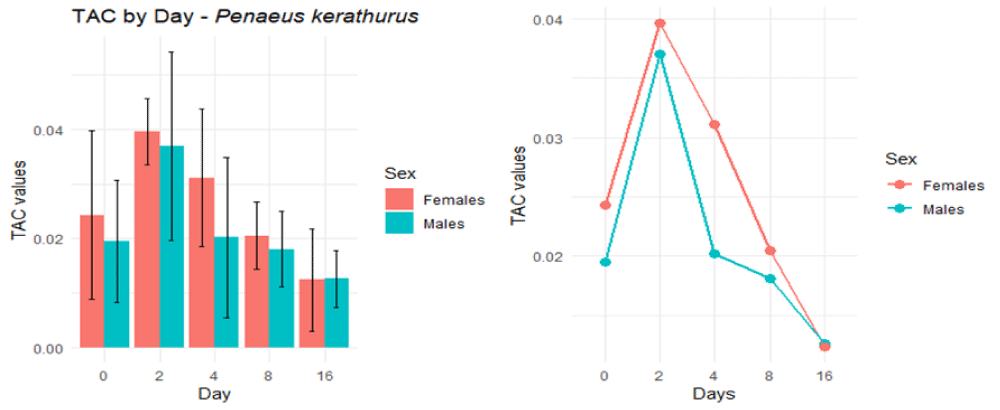
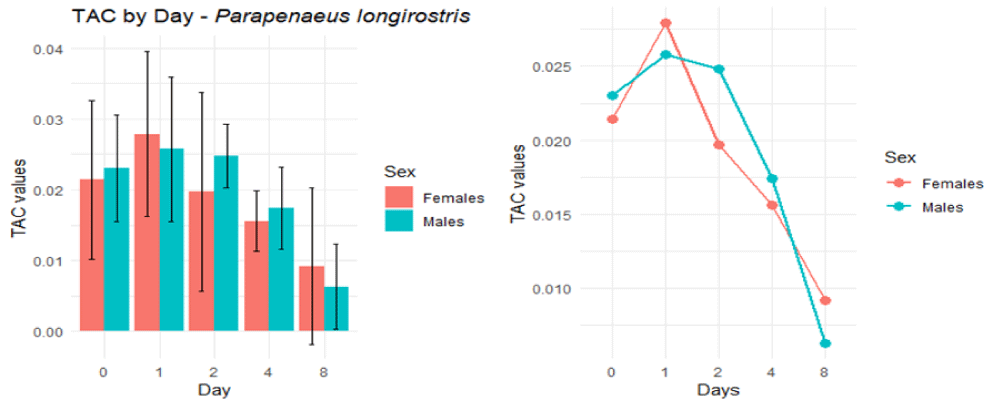
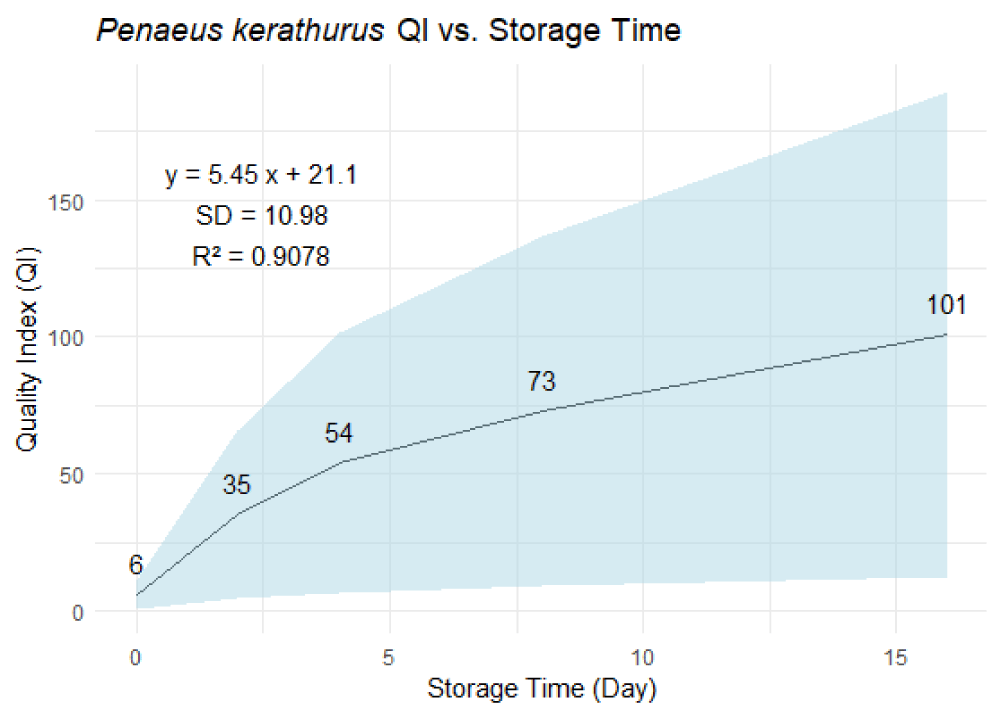
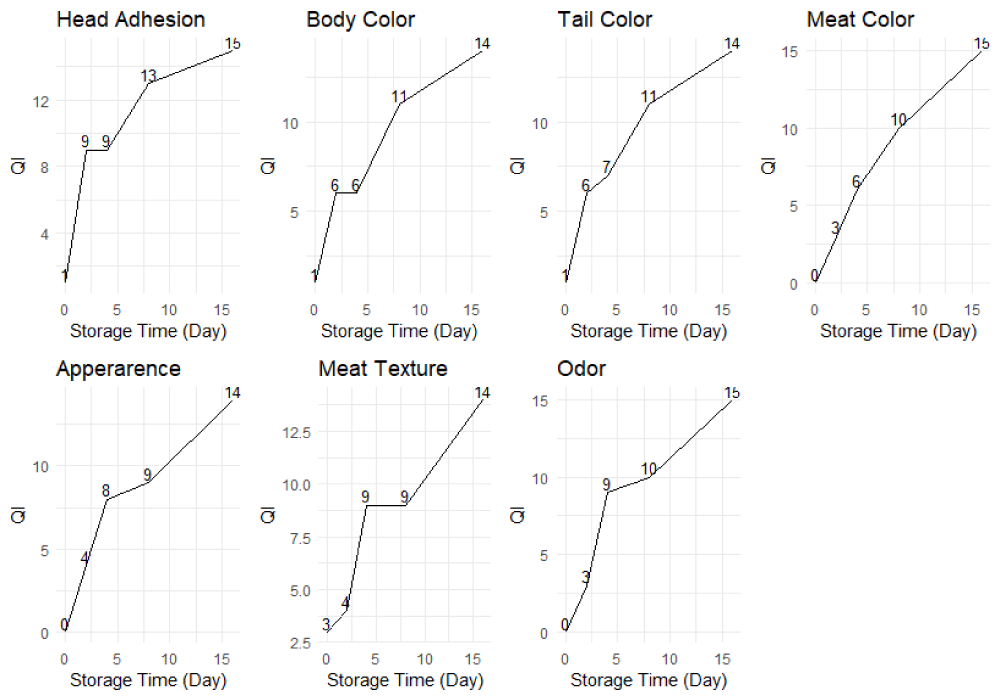

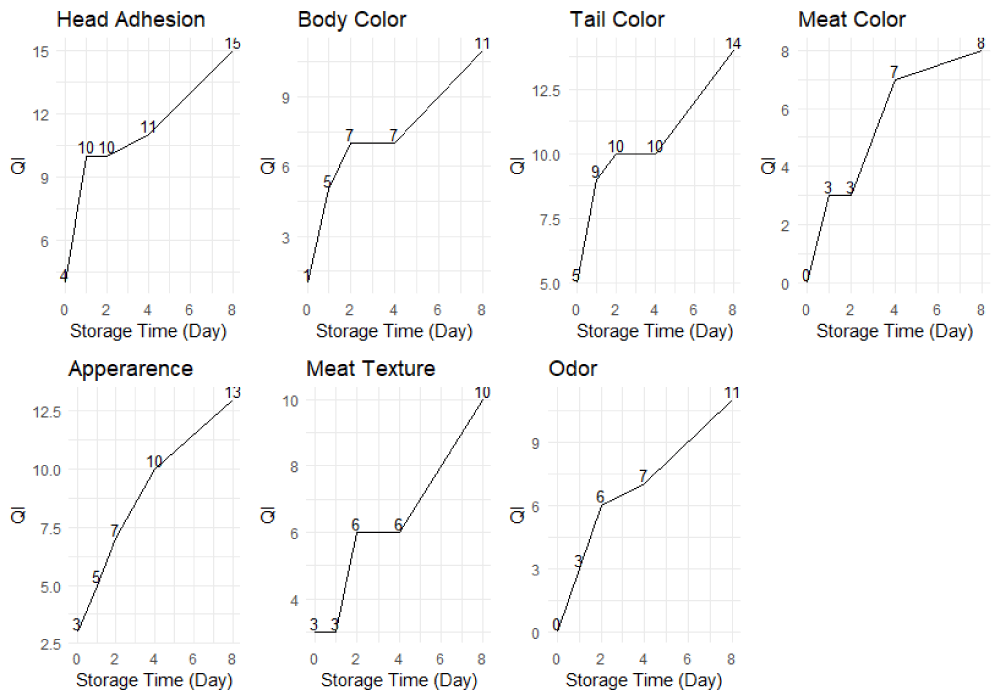
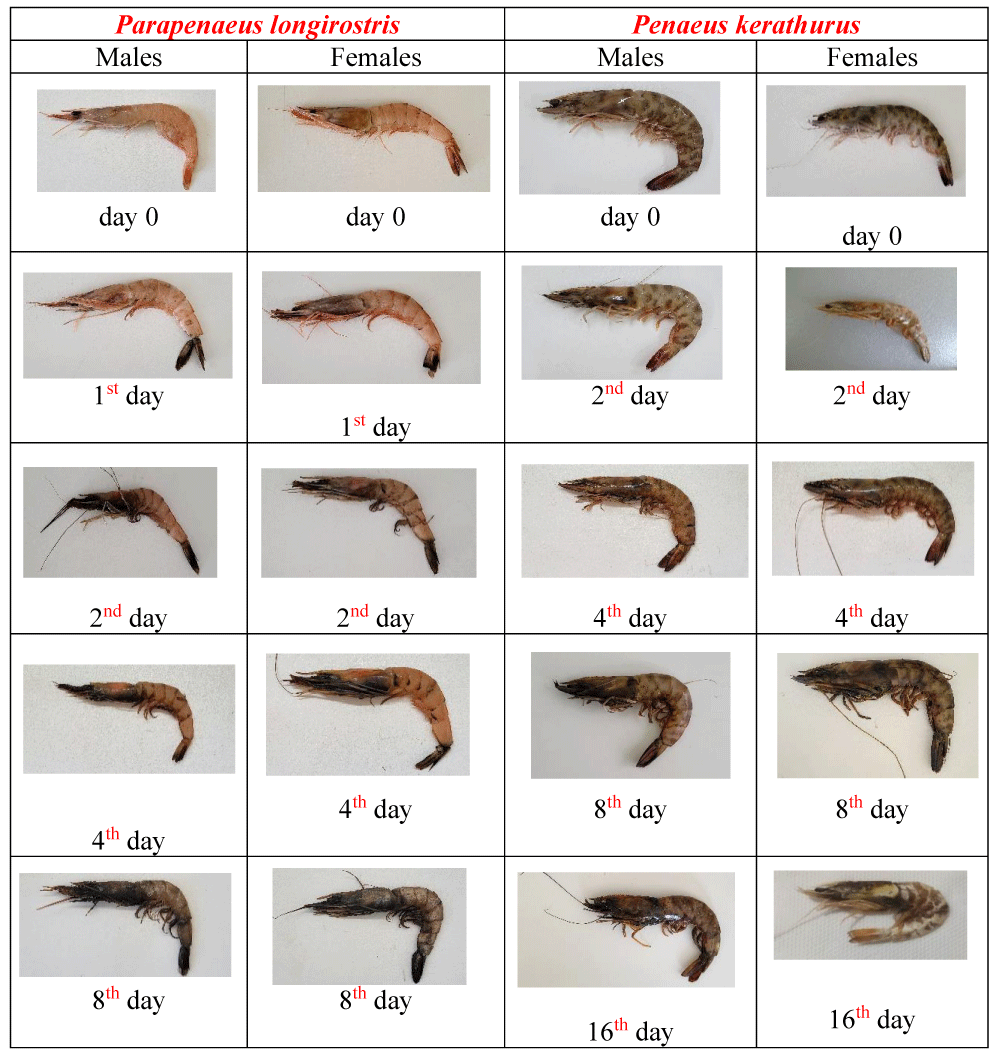


 Save to Mendeley
Save to Mendeley
